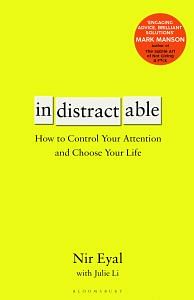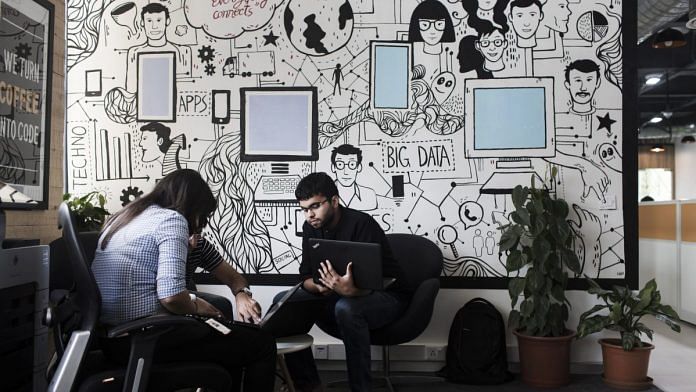Meetings today are full of people barely paying attention as they send emails to each other about how bored they are. Part of the problem is that too often people schedule a meeting to save themselves from having to make the effort of solving a problem for themselves. To some, talking it through with colleagues feels better than working it out alone. Certainly, collaboration has its place, but meetings should not be used as a distraction from doing the hard work of thinking. How can we make meetings more worthwhile? The primary objective of most meetings should be to gain consensus around a decision, not giving the meeting organiser a forum to hear themselves think.
One of the easiest ways to prevent superfluous meetings is to demand two things of anyone who calls one. First, the meeting organiser must circulate an agenda of what problem will be discussed. No agenda, no meeting. Second, they must give their best shot at a solution in the form of a brief, written digest. The digest need not be more than a page or two discussing the problem, their reasoning and their recommendation.
These two steps require a bit more effort up front, but that’s exactly the point. Requiring an agenda and a brief not only saves everyone time by getting to the answer faster, but also cuts down on unnecessary meetings by asking for a bit of effort on the part of the organiser before calling one. But what about sharing collective wisdom and brainstorming? Those are good things, just not in meetings of more than two people. Unless the meeting is called because of an emergency or as an open forum to listen to employee concerns, unique perspectives about a business challenge can be shared via email to the stakeholder responsible. Brainstorming can also be done before the meeting and is best done individually or in very small groups.
Also read: You can’t change your boss, but you can change yourself: How to prevent workplace burnout
When I taught at the Stanford Design School, I consistently saw how teams that brainstormed individually before coming together not only generated better ideas, but were also more likely to have a wider diversity of solutions as they were less likely to be overrun by the louder, more dominant members of the group. Next, if the meeting is going to happen, we need to follow the same rules of synchronous communication discussed in the last chapter on group chat.
Whether online or offline, the same rules of being selective about who attends and making sure to get in and out quickly apply. Once we’re in the meeting, there’s a new problem: people on their devices instead of being fully present. Attendees check email or fiddle around on their phones during meetings despite the numerous studies showing that our brains are awful at absorbing information when we’re not paying close attention. Watching others use their devices in meetings escalates an arms race of perceived productivity and paranoia – the impression that someone else is working while we’re not increases our stress levels. Thinking about our own flooded inboxes reduces the meeting’s effectiveness, and our lack of participation only serves to make the meeting less productive, less meaningful, less interesting and more boring.
To stay indistractable in meetings, we must rid them of nearly all screens. I’ve conducted countless workshops and have observed a stark difference between meetings in which tech use was permitted versus those that were device- free, and meetings without screens generated far more engaged discussion and better outcomes. In order to ensure that meeting time isn’t wasted, we need to introduce new customs and rules. If we are going to spend our time in a meeting, we must make sure that we are present, both in body and mind.
First, every conference room should have a charging station for devices, but make sure it is just out of everyone’s reach. When attendees congregate prior to the meeting, they should be encouraged to silence their phone and plug in their devices so the meeting can proceed free of distractions. While there are specific exceptions to these customs based on the business, the only things attendees really need in a meeting are paper, a pen and perhaps some Post-it notes. If slides need to be presented on- screen, designate one member of the team to present from their computer or have a dedicated laptop that stays in the meeting room. Rather than sparking the desires of others to use their devices, anyone attempting to use their phone or laptop during the meeting should get disapproving looks from you and your colleagues.
Also read: Dropping like flies: The rise of workplace burnout and how to tackle it
Despite the potential for increased engagement in tech-free meetings, some of us may be squeamish about the idea and may protest that we need our devices for taking notes or accessing files. But if we’re honest with ourselves, we know that these are not always legitimate excuses. Why do we really use our devices in meetings? Our technology gives us a way of being physically present but mentally absent; the uncomfortable truth is that we like to have our phones, tablets and laptops in meetings not for the sake of productivity, but for psychological escape.
Meetings can be unbearably tense, awkward and exceedingly boring, and devices provide a way to manage our uncomfortable internal triggers. Reducing unnecessary meetings by increasing the effort of calling one, following good rules of synchronous communication, and ensuring people are engaged in the meeting instead of on their devices, will make them much less awful. Though the modern workplace is full of potential distractions, it is up to us to manage them by continually trying new ways to stay focused.
 This excerpt from Indistractable: How to Control Your Attention and Choose Your Life by Nir Eyal with Julie Li has been published with permission from Bloomsbury India.
This excerpt from Indistractable: How to Control Your Attention and Choose Your Life by Nir Eyal with Julie Li has been published with permission from Bloomsbury India.






